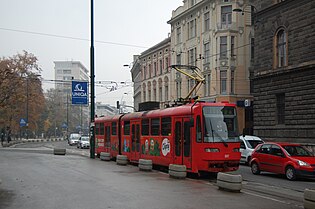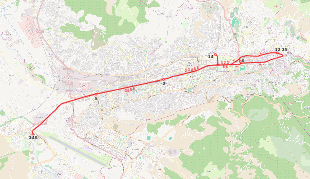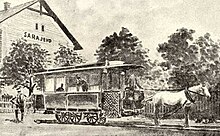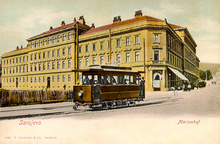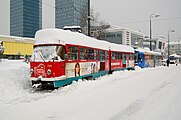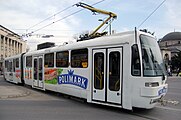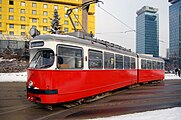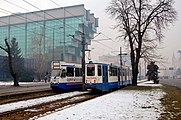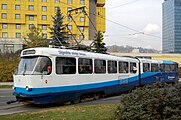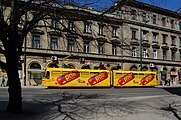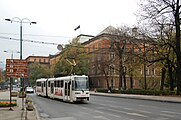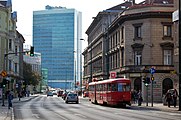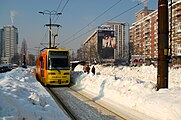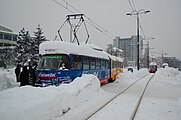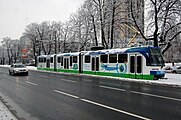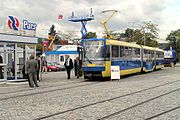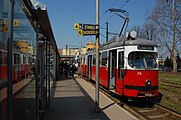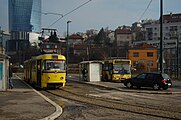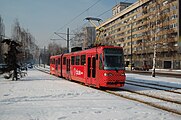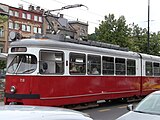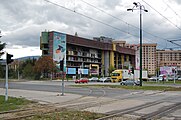
Sarajevo is the capital and largest city of Bosnia and Herzegovina, with a population of 275,524 in its administrative limits. The Sarajevo metropolitan area including Sarajevo Canton, East Sarajevo and nearby municipalities is home to 555,210 inhabitants. Located within the greater Sarajevo valley of Bosnia, it is surrounded by the Dinaric Alps and situated along the Miljacka River in the heart of the Balkans, a region of Southern Europe.

The siege of Sarajevo was a prolonged blockade of Sarajevo, the capital of Bosnia and Herzegovina, during the Bosnian War. After it was initially besieged by the forces of the Yugoslav People's Army, the city was then besieged by the Army of Republika Srpska. Lasting from 5 April 1992 to 29 February 1996, it was three times longer than the Battle of Stalingrad, more than a year longer than the siege of Leningrad, and was the longest siege of a capital city in the history of modern warfare.
This article deals with the system of transport in Belgrade, both public and private.

Sarajevo International Airport is the main international airport in Bosnia and Herzegovina, serving Sarajevo, capital of Bosnia and Herzegovina. It is located 3.3 NM southwest of the Sarajevo railway station and some 6.5 NM west of downtown Sarajevo in the Ilidža municipality, suburb of Butmir. In 2019, 1,143,680 passengers travelled through the airport, compared to 323,499 in 2001.

Fudbalski klub Slavija Sarajevo is a professional association football club from the city of Istočno Sarajevo, Republika Srpska that is situated in Bosnia and Herzegovina. Slavija Sarajevo is a member of the Football Association of Republika Srpska and the Football Association of Bosnia and Herzegovina and it is active in the First League of the Republika Srpska. The club's home stadium is Gradski SRC Slavija Stadium, which has a capacity of 6,000 seats.
The architecture of Bosnia and Herzegovina is largely influenced by four major periods, when political and social changes determined the creation of distinct cultural and architectural habits of the region.

Fax from Sarajevo: A Story of Survival is a nonfiction graphic novel by veteran American comic book artist Joe Kubert, published in 1996 by Dark Horse Comics.

Grbavica Stadium is located in Grbavica, Sarajevo, Bosnia and Herzegovina. This football stadium has terraces close to the pitch and it is the home stadium of FK Željezničar Sarajevo and one of two stadiums of the national football team of Bosnia and Herzegovina. The stadium has a capacity to hold 13,146 seated spectators, with more room for standing spectators under South stands. Grbavica Stadium is also known as Dolina ćupova.

Johnstown Traction Company (JTC) was a public transit system in Johnstown, Pennsylvania, United States. For most of its existence it was primarily a street-railway system, but in later years also operated rubber-tired vehicles. JTC operated trolley (tram) service in Johnstown from February 23, 1910 to June 11, 1960. Johnstown was one of the last small cities to abandon trolley service in the United States. It was also the smallest city to acquire a fleet of PCC cars and acquired trackless trolleys at a late date compared to larger transit properties. Many of the 1920s-era cars went directly to museums; however, none of the 17 PCC streetcars were saved. Efforts to sell the 16 then-surviving PCC cars intact were unsuccessful, and in 1962 they were scrapped, but many of their components were salvaged and sold to the Brussels, Belgium tram system, reused in the last series of single PCC trams (7156–7171), which ran from 1970 until February 2010.
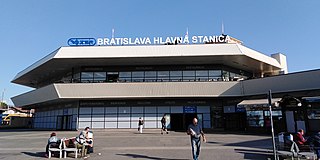
Bratislava main railway station is the main railway station of the city of Bratislava, Slovakia. It averages about 60,000 passengers per day.

Art of Bosnia and Herzegovina refers to artistic objects created by the inhabitants of Bosnia and Herzegovina from prehistory to present times.
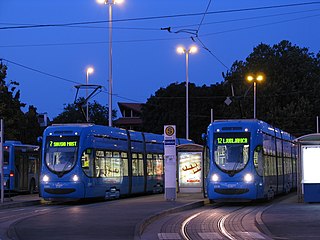
The Zagreb tram network, run by the Zagrebački električni tramvaj (ZET), consists of 15 day and 4 night lines in Zagreb, Croatia. Trams operate on 116.3 kilometres (72.3 mi) of metre gauge route. During the day every line runs on average every 5–10 minutes, but almost every station serves at least two routes. Nighttime lines have exact timetables averaging at about every 40 minutes. The first horsecar tram line was opened in 1891, and the first electric tram ran in 1910. Zagreb's tram system transported 204 million passengers in 2008.

The Belgrade tram system is a 1000 mm gauge network that in 2021 had 12 routes running on 43.5 kilometres (27.0 mi) of track in the city of Belgrade, Serbia. It is operated with 231 trams, including ČKD Tatra KT4, CAF Urbos, and Duewag Be 4/6 trams. The first tram line was introduced on 14 October 1892. In the late 2000s, complete reconstruction of the system commenced.
City bus service number1 Vižmarje – Mestni log is the second largest bus line of the 32 bus lines in Ljubljana, Slovenia. It transports approximately 10,000,000 passengers every year. Geographically, it connects the northwest and southwest of Ljubljana, passing through Vižmarje, Šentvid, Trata, Šiška, Ajdovščina, Vič, Murgle, and Mestni log.

The St. Gallen trolleybus system forms part of the public transport network of St. Gallen, the capital city of the canton of St. Gallen, Switzerland.

The tramway in Piran was a public transport system that connected the Tartini Square with the railway station in Lucija.
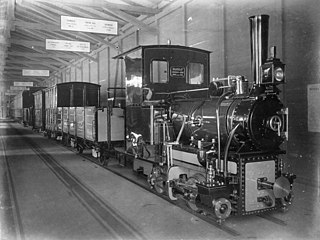
Most Bosnian-gauge railway lines were built during the Austro-Hungarian Empire. Several 760 mm gauge railways were planned in order to link the extensive narrow-gauge railways in the Austro-Hungarian Empire with those in Bosnia and Herzegovina. Until the outbreak of the Balkan Wars in 1912 several were constructed.
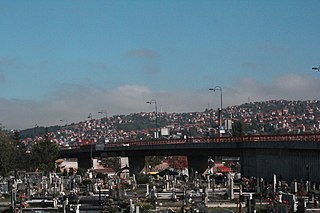
Stup Interchange is a cloverleaf interchange in Sarajevo. It connects two different routes and some important locations in the largest city in Bosnia and Herzegovina. This interchange is the biggest interchange in Balkans after Butila Interchange that is two miles (3.2 km) away from this interchange. Stup Interchange is connecting Sarajevo International Airport with M17 Road, A1 Motorway, Western Sarajevo (Ilidža), Dobrinja, Boljakov Potok, Rajlovac Industrial Zone and Center of city.

Sarajevo main railway station is a railway station in Sarajevo, the capital of Bosnia and Herzegovina, located in the northwest part of the city, approximately 3 kilometers from the downtown area near Marijin Dvor.
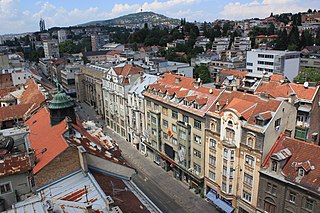
Marshal Tito street, or Tito's street, is one of the main streets in Sarajevo, located in the Centar Municipality. The street is named after Josip Broz Tito, the former President of Yugoslavia.
